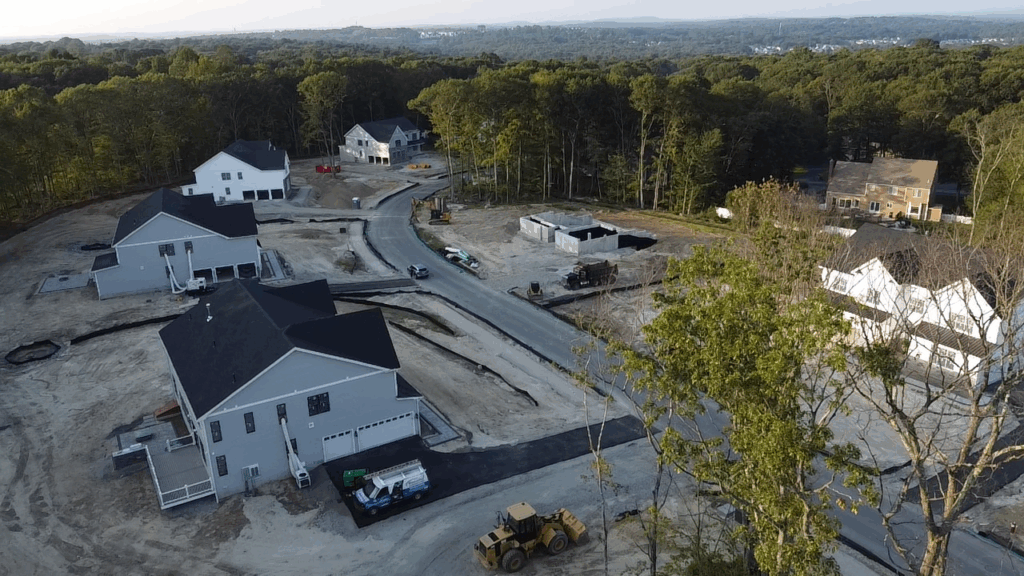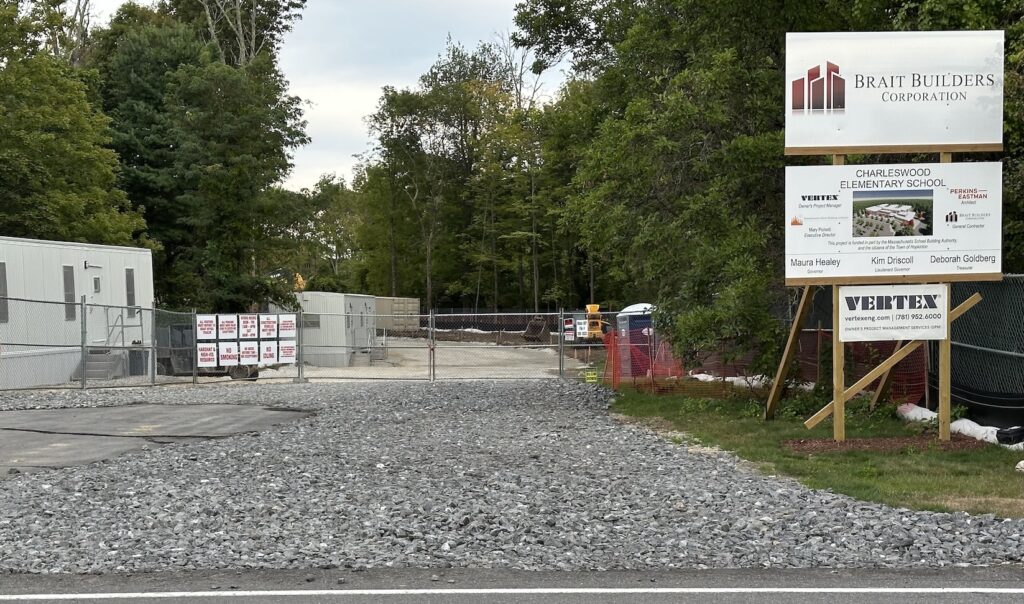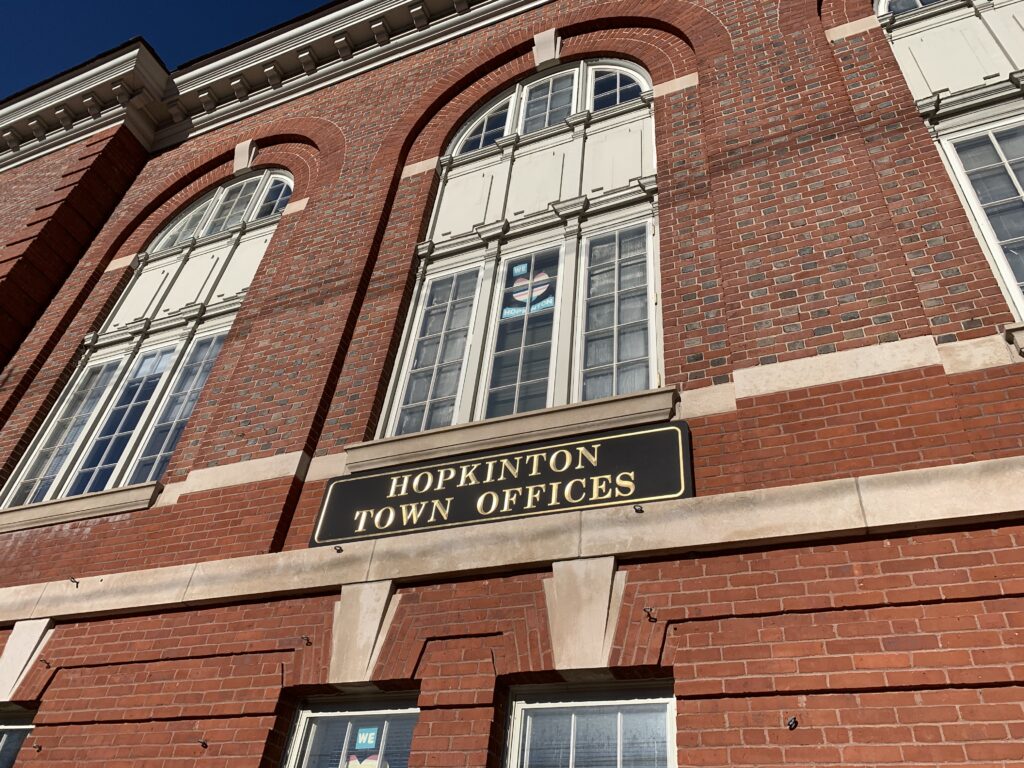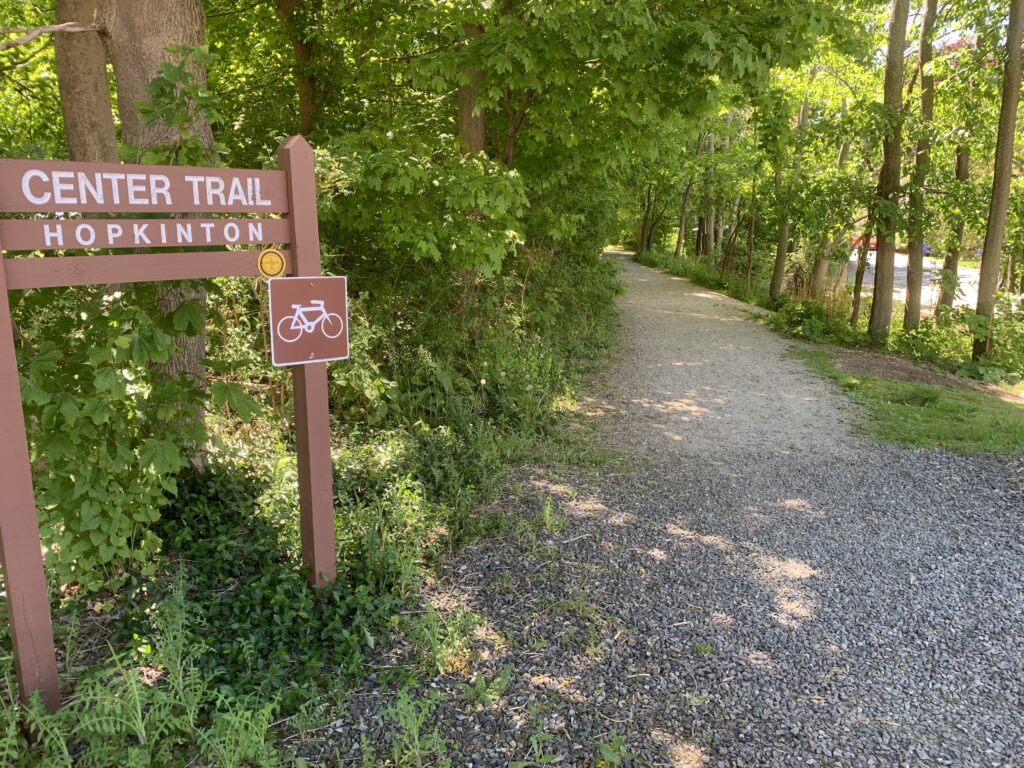The Conservation Commission at its meeting Tuesday night decided to continue the three hearings on the Massachusetts Laborers’ Training Center property at 37 East Street until more clarity could be received regarding the installation of an underground gas line.
Two hearings involved the gas line, with one of them involving work on a portion of Clinton Street. The installation of the gas line would involve site work on the Clinton Street right of way from Front Street as well as between 66 and 82 Clinton Street. The third hearing requested permission for installation of a fire suppression line.
Attorney George Connors spoke on behalf of the applicant. He explained that the gas line would begin at Clinton Street and cross the campus to behind the Maloney maintenance building, where he said there was “a slight crossing” of a wetland. It would then cross the campus and go around the pond to the ball field areas and end at the dormitory building. He noted that residents of Clinton Street would be able to tie into the gas line.
The alternative plan, Connors added, would have the gas line go down Clinton Street to East Street and into the campus, which he described as “a fairly long area.” That plan also would involve the area in front of Cold Springs Brook.
The underground oil storage tanks would have to be removed, he said, noting that a previous oil spill had been cleaned up. The three water fire pumps for each building also would be removed with the installation of the water line.
Connors noted that the Fire Department requested that a second feed near the box culvert be directed toward East Street, which would be beneficial for the neighborhood and might mitigate the need to dredge the pond.
Connors asked that the Clinton Street portion of the work be approved at the meeting because paving season would be ending with winter approaching, but Conservation Administrator Kim Ciaramicoli hesitated.
“There’s a lot to unpack here,” she said. “The regulations are always up for interpretation by the board.”
While the gas line at Clinton Street could have some public benefit, the part that runs through private property might not.
Concerns were raised about tree clearing for the pipe installation. The installation, Connors said, would require a corridor that would be between 20 and 25 feet wide for the pipe installation, a trench and the staging area.
“We’ve minimized it to the largest extent that we could,” he said. “There are a lot of trees that are going to have to go down. But it’s a fairly sparse area, and we can plant trees along the edge when we complete it, if that’s necessary.”
Members struggled with the width that was requested. Connors explained that a backhoe would have to dig and then a loader would have to put sand in the trench to protect the pipe. The vehicles are about 8 feet wide and would need room to work.
Said chair Jeff Barnes: “It seems like there’s a more efficient way to do it.”
“If you’re in the woods, you don’t have to have the fastest method,” added member Ted Barker-Hook. “Especially if that means saving some trees.”
Co-vice chair Melissa Recos asked if the gas company might want to later extend the pipeline down Clinton Street. She wondered whether the diameter of the pipeline should be wider so it would not have to be replaced at a later date.
A couple of abutters expressed concerns about the amount of clearing as well as the potential hookup to the gas line.
Abutter Paula McDonald asked about the installation of the gas line as opposed to using solar or geothermal alternatives.
“I think that in the materials I’ve read, the environmental impact was very understated,” she said as she described the dense tree cover. “As proposed, I think it’s environmentally irresponsible and a little shortsighted in terms of the big picture.”
Ciaramicoli added that because there are other projects simultaneously occurring on the site, the committee should make sure that the performance thresholds put in place by the Wetlands Protection Act aren’t being exceeded. She also said that the option of going down Clinton Street to East Street would be better for the environment, even if it is not as cost effective for the developer.
“I think the Laborers have done a fairly good job at looking at the environment overall,” Connors replied.
There also was no Department of Environmental Protection file number on the plans, which prevented it from moving forward.
Downey Street tree issue revisited
The other major issue the commission discussed involved a cease and desist order for tree clearing at 56 Downey Street, which abuts Lake Maspenock. At the last meeting, the commission discussed how several trees were removed from the property without its permission.
The property owner, Rakesh Goel, apologized to the commission, stating that there had been some confusion between him and the contractor regarding which trees were supposed to be removed. He agreed to replace them at a 2-to-1 ratio.
He also explained that he would like permission to remove one of the trees so that there could be a clear view of Lake Maspenock from the deck of his 40-foot-wide property. Goel offered to plant replacement trees as a buffer on the lake’s bank either on the south or north side. A portion of the deck is planned for the buffer zone. His neighbors, he said, did not have trees blocking the view of the water. He also said he would like to put up a dock at a future date.
“Obviously, everybody would like to have a view of the lake,” Goel said. “I’m being very honest and straightforward.”
Barnes said that the commission is addressing this as future projects come in by requiring trees to be planted by neighboring properties to provide bank stabilization and prevent the infiltration of sediment, salts and herbicides into the water.
Barker-Hook also pointed out that neighboring properties do have trees. He pulled up satellite images during the meeting that showed trees on abutting property.
“I do like the idea that if trees are removed — particularly without the commission’s permission — that they be replaced in abundance,” he said. “But the neighbors do have trees. That’s simply not true that the neighbors don’t have trees in their backyards.”
The commission voted unanimously to replace the wrongfully removed trees with “trees of substance.”
The situation with Tree 15 and the deck was to be discussed at the next meeting.
Hearing for The Trails continued
A hearing for The Trails regarding drainage improvements was continued because project engineer Peter Bemis was not present at the meeting.
The next meeting will be on Nov. 15 at 7 p.m.




















0 Comments